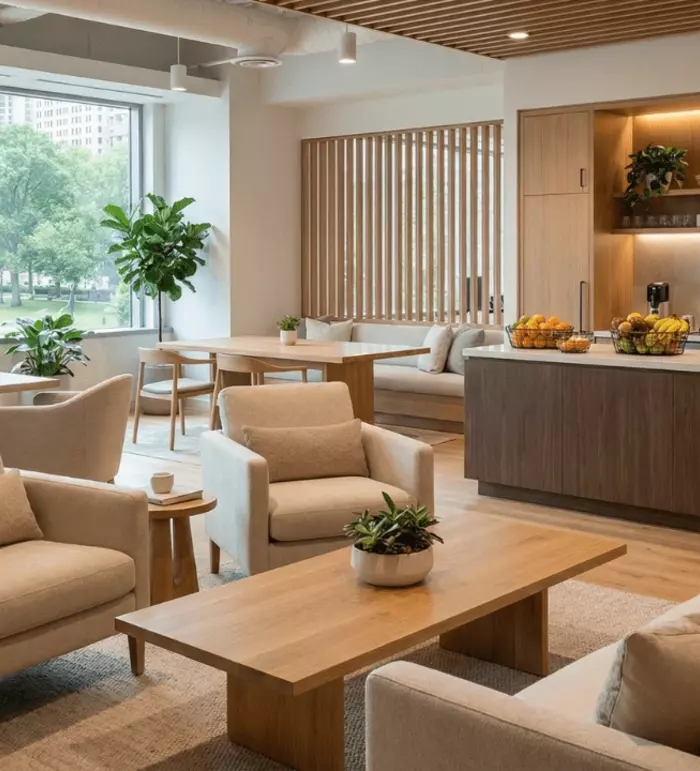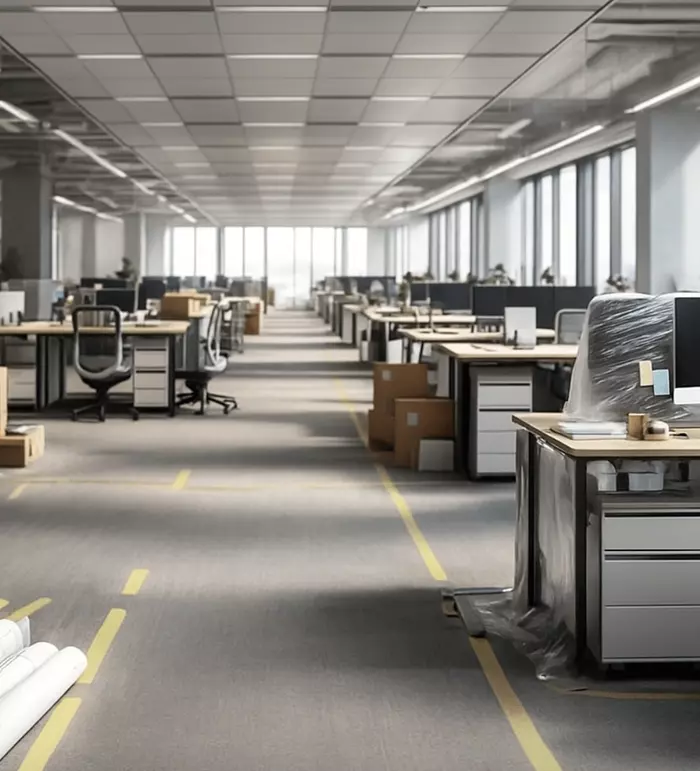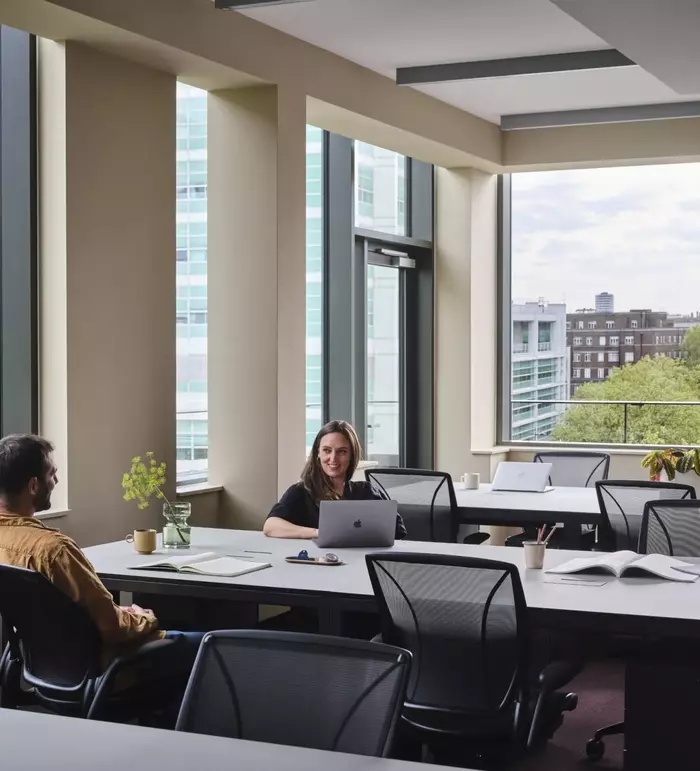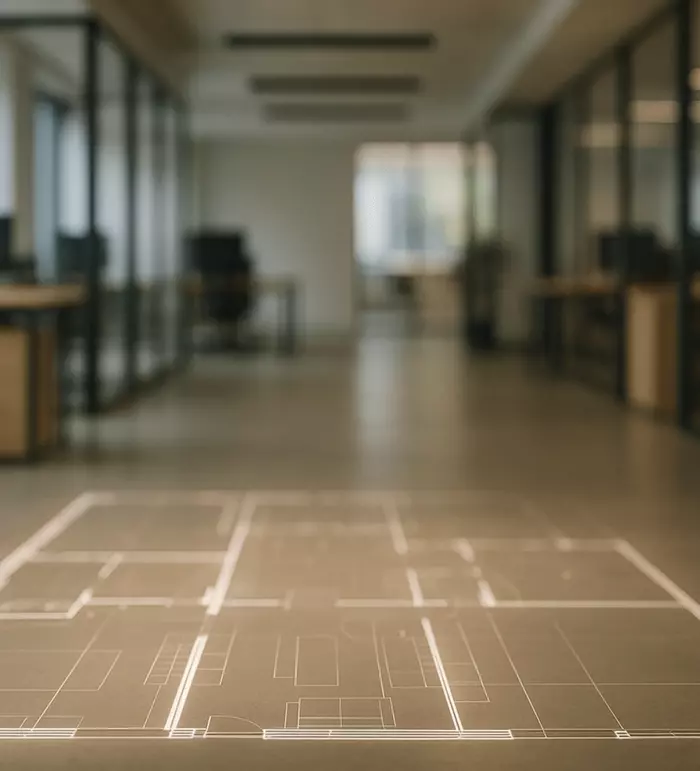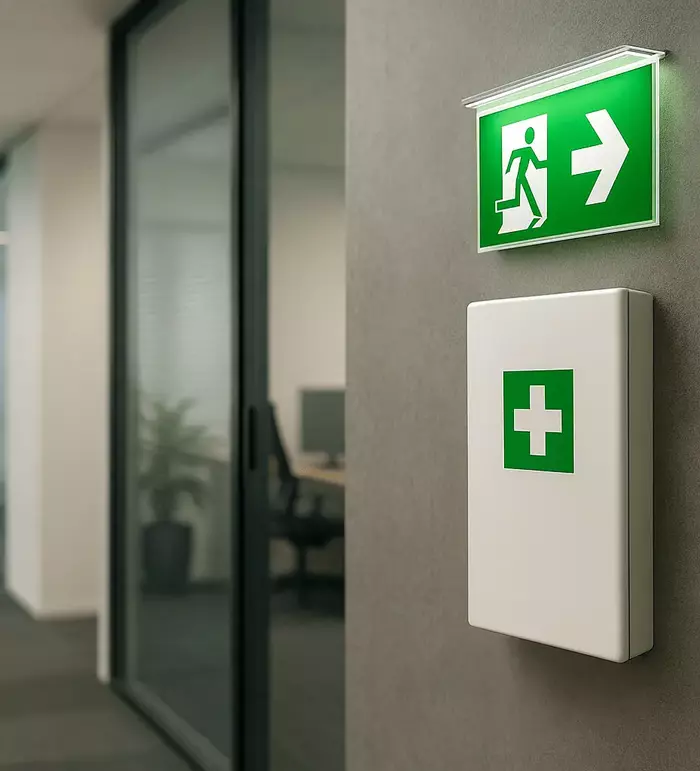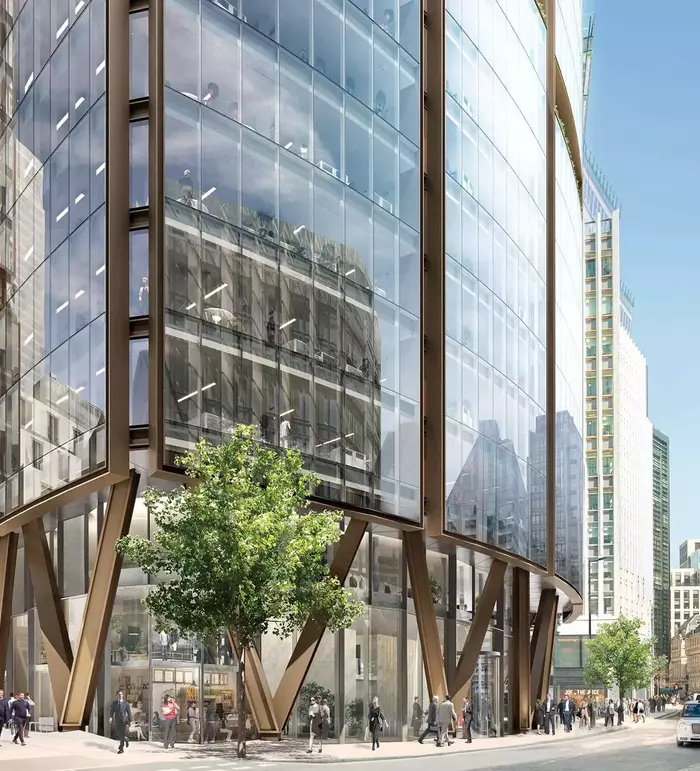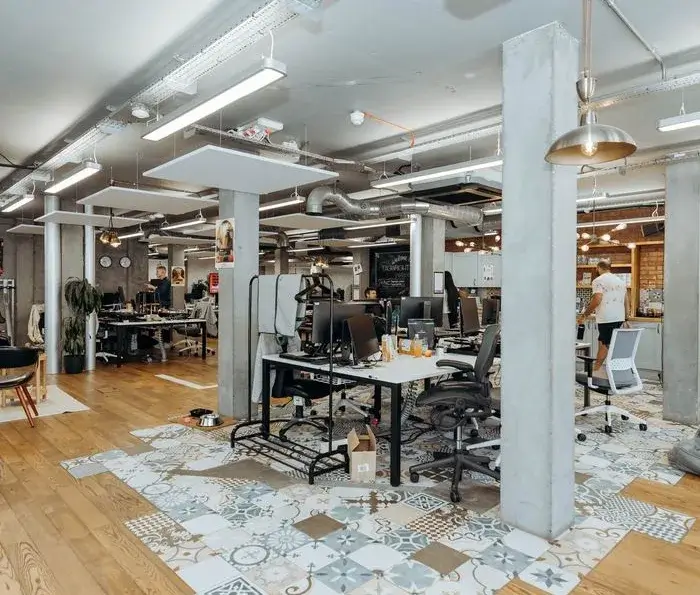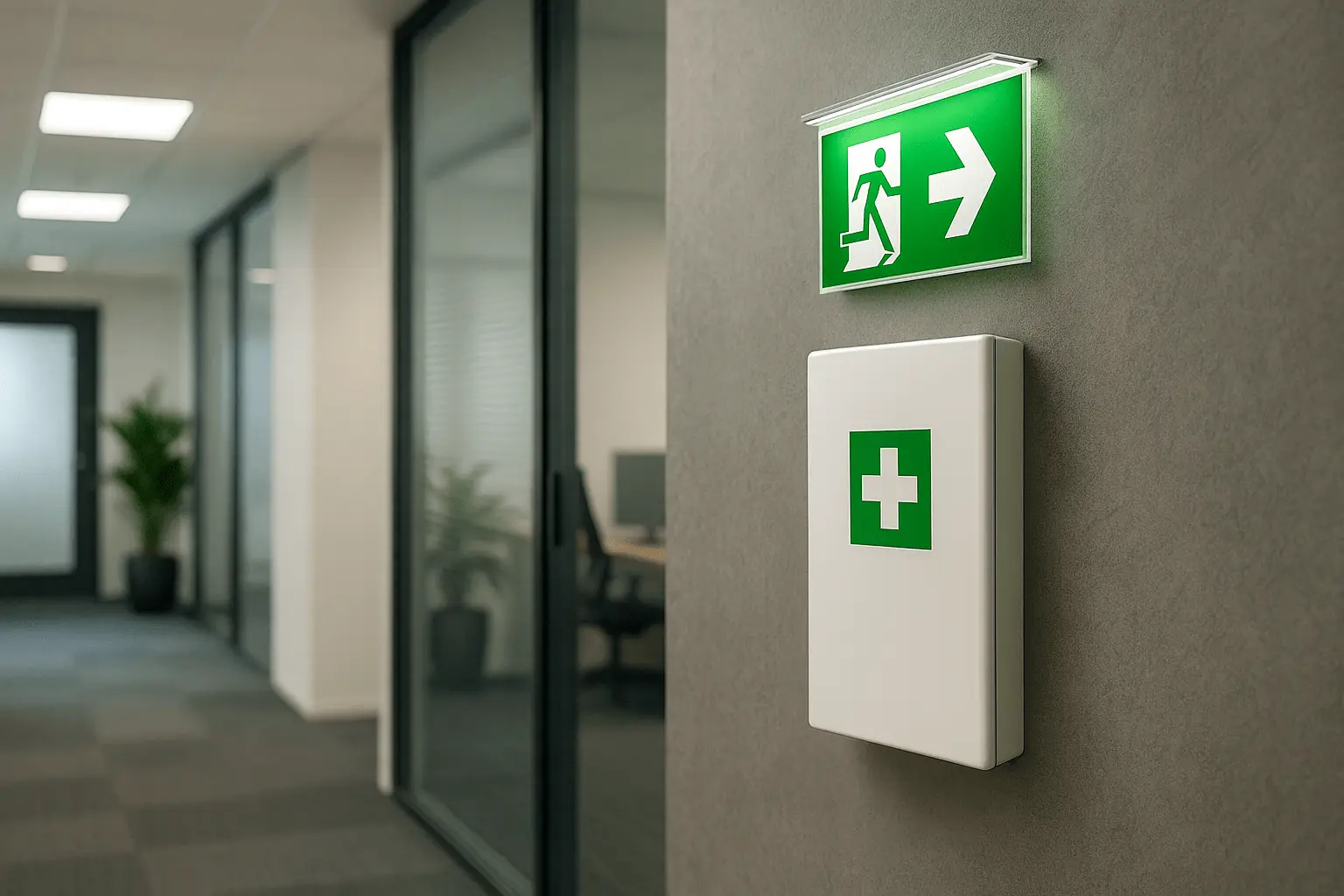Choosing an office is not just about postcode bragging rights and a good coffee machine. If you want your team to do their best work, your office space's health and safety foundations must be solid. That is true whether you are moving three desks or three hundred, and whether you prefer private floors or shared areas.
Serviced offices make things simpler because the operator handles fit out, maintenance and many compliance tasks. Your duty as an employer does not disappear though. You still have to risk assess your work, train people and keep records. If you want a space that is safe, productive and genuinely easy to run, bake these checks into your search. When you talk to our team, we will help you weigh health, safety and amenities alongside cost and location on relevant options from our serviced office space marketplace.
Key takeaways
- Put office space health and safety checks into your viewing plan.
- Ask operators for risk, fire and water hygiene documentation.
- Use HSE templates to record risks and fixes.
- Prioritise DSE setup, temperature and fresh air.
- Confirm first aid, incident reporting and RIDDOR are covered.
- Align CCTV and access control with UK GDPR.
What the law expects of employers in serviced offices
Health and safety law is simple on paper and unforgiving in practice. As the employer, you must plan, do, check and act. In a serviced office, some risks are controlled by the operator, like communal fire systems and lifts. The rest, like how your team uses equipment, remains yours.
Start by documenting a sensible, task-based risk assessment. The Health and Safety Executive provides a clear risk assessment template and examples you can adapt to office contexts, including an office-based example in the pack, which makes life easier for first-time movers.
Fire safety responsibilities are shared. The operator normally manages alarms, extinguishers and evacuation for the building. You still need to brief your people, nominate fire marshals and keep your part of the risk assessment up to date. Guidance for offices and shops is set out in the official fire safety risk assessment for offices and shops and in Home Office guidance on duties under the Fire Safety Order.
Risk assessments that actually work
Keep it lightweight but real. List your activities, note hazards, identify who could be harmed and set straightforward controls. In a serviced office, typical controls include DSE checks, clear access routes, sensible storage and keeping cleaning products in labelled containers. Record the date and the person responsible for each action. The HSE's office example in the template pack shows how short, clear actions get better results than theoretical waffle.
Fire safety that protects people and continuity
On viewings, ask to see the latest fire risk assessment summary for the building and where the assembly point is located. Confirm the frequency of alarm testing and evacuation drills. Your plan should include named fire marshals, a personal emergency evacuation plans process and a list of equipment that must be isolated before evacuation. Use the GOV.UK offices and shops guide to check your plan covers the basics.
People, posture and productivity: practical ergonomics
Most modern work is screen-based. That makes musculoskeletal discomfort and fatigue the biggest everyday risks in an office. The good news is that small adjustments have a big impact: chair height, monitor position and frequent micro-breaks. This is not purely about comfort. Good ergonomics reduces absence and helps new starters settle in quickly.
Serviced offices often include adjustable chairs, monitor arms and quiet booths. Still, you should check that the kit is available in the right quantities for your headcount. If you are scaling or planning hybrid patterns, ensure there are enough ergonomic seats for peak days. On London searches, our advisers can point you to buildings with strong wellness features using our office space in the London hub.
Workstation setup and DSE basics
The HSE publishes a free DSE workstation checklist you can give to every screen user. It covers screens, keyboards, mice, chairs, desks and the general environment, and it links to the Display Screen Equipment Regulations. Using the checklist during onboarding keeps standards consistent, even as your team grows.
Encourage the 20-20-20 habit: every 20 minutes, look 20 feet away for 20 seconds. Provide laptop stands for mobile workers and keep a stash of external keyboards. If you are targeting amenity-rich space with quiet rooms and booths, our team can shortlist options such as offices in the City of London.
Temperature, ventilation and indoor air quality
There is no legal minimum or maximum office temperature, but you must keep indoor conditions reasonable. The HSE explains that the requirement comes from the Workplace Health, Safety and Welfare Regulations and that the right temperature depends on the activity and conditions. If people are complaining about heat or cold, you need to act, as set out in HSE guidance on workplace temperature.
For plain-English guidance you can show to stakeholders, GOV.UK's workplace temperatures page states that indoor workplaces must be reasonable and reminds employers that there is no hard legal maximum, which is why air movement, shading and hydration matter in summer.
Facilities you should expect from a quality serviced office operator
Beyond desks and Wi-Fi, your operator should keep common areas safe and compliant. That covers fire detection, emergency lighting, lifts, accessible toilets, cleaning standards and contractor management. You should expect documented servicing schedules and to be told about any work that could affect your people.
During viewings, ask how defects are reported and how quickly they are typically fixed. Check that routes to fire exits stay clear and that housekeeping standards do not vary wildly between floors or wings. If you want inspiration on what great looks like in practice, browse our round-up of top London serviced offices for examples of buildings that blend safety and style.
First aid, incident reporting and insurance alignment
You need enough trained first aiders for your risk profile and working patterns. The HSE's First aid at work guidance (L74) was updated in 2024 and now emphasises mental health in first aid needs assessments, as well as guidance on life-threatening bleeding. Make sure your operator knows who your first aiders are and where the kit and AED are located.
Serious injuries, certain illnesses and dangerous occurrences must be reported under RIDDOR. Even in a serviced office, you, the employer, are responsible for reporting when it concerns your staff or your undertakings. Check your internal incident form collects the details you will need if an event becomes reportable, and review the requirements at the HSE's page on reporting of injuries, diseases and dangerous occurrences.
Water hygiene, cleaning and slips, trips, falls
If water services are centralised, the operator typically manages legionella control and tank inspections. Ask to see a recent summary or assurance statement. The HSE's guidance on hot and cold water systems and legionella shows why these checks matter, even in office settings with simple pipework.
For day-to-day safety, cleaning standards and walk-off mats matter more than people think. Slips and trips are the most common workplace injuries, which is why the HSE's brief guide on preventing slips and trips is worth folding into your contractor instructions and new-starter inductions.
Policies you still own when the building is “all-inclusive”
An all-inclusive lease does not include your responsibilities as an employer. You remain accountable for how your team works, what data you collect and how you respond to incidents. That includes onboarding, supervision, equipment choices and how you manage flexible work patterns.
Create a one-page matrix showing who does what: you, the operator and any third-party vendors. Add contacts for the building manager, your insurance broker and your HR lead. Review it every six months and after any layout change, headcount jump or new equipment rollout. For broader wellbeing considerations, you can align with our guide to supporting employee wellbeing in the office when you plan amenities.
Data protection, CCTV and access control
Serviced offices often use building CCTV and keycards. If you add your own cameras or biometrics for your private suite, you are a data controller. The ICO's guidance on CCTV and video surveillance explains consent, signage, retention and subject access in plain language. GOV.UK also sets out the requirement to register with the ICO and pay a fee if you use CCTV for business purposes.
Avoid overly intrusive systems when a simple fob will do. Restrict camera views to your space, set short retention by default and document your lawful basis. Keep your access logs secure and restrict access to those who genuinely need it.
Inductions, training and wellbeing
New-starter inductions should cover building access, fire routes, first aiders, DSE self-assessment and how to report issues. Refresh annually or when people change teams or equipment. Add short toolbox talks for keyboard shortcuts, micro-breaks and stretching. Small changes reduce aches and keep your incident log empty.
If your team runs events or off-sites, our checklist on running safe events shows how to plan roles, logistics and incident response without drowning in admin. You can borrow ideas from our corporate offsite planning checklist when you set up your own playbook.
A simple office space health and safety checklist you can use on viewings
Use this quick flow during tours and shortlist calls. It keeps the conversation focused and helps you compare spaces fairly.
- Documentation and assurance
Ask for the building's latest fire risk assessment summary and the testing schedule for alarms and emergency lighting. Confirm who leads Legionella control and where you can view recent records. Check how incident reports flow between your company and the operator. Use the HSE risk assessment template to capture any actions you will own from day one. - Means of escape and evacuation
Walk at least one full evacuation route from your proposed suite. Check that exit doors open freely, routes are clear, and the assembly point is realistic for your headcount. Validate that lifts are on a maintenance schedule and that refuge points are signed and usable. Compare what you see with the offices and shops fire risk guidance to spot gaps quickly. - Workstations and DSE
Count the number of adjustable chairs and confirm monitor arms or risers are available if you will hot desk. Ask whether the operator can supply an extra ergonomic kit if you grow. Build your own onboarding using the HSE DSE checklist so every user gets the same baseline. - Thermal comfort and air
Ask how the BMS is controlled and what tenants can adjust locally. Check the air supply to your floor, not just the building headline. The law requires a reasonable indoor temperature, as set out in HSE temperature guidance for employers and in GOV.UK's workplace temperatures overview. - First aid, AED and incident reporting
Confirm the location of first aid kits and any AEDs in the building. Note where your first aiders will sit on peak days. Align your procedures with the updated First Aid at Work guidance (L74) and keep an incident form template ready in case an event becomes reportable under RIDDOR. - Cleaning standards and floor safety
Look at lobby mats, bathroom housekeeping, kitchen floors and any sloped or threshold areas. Ask how spills are logged and closed out. Keep your expectations aligned with the HSE's leaflet on preventing slips and trips. - Data and access control
If you add CCTV to a private suite, make sure your fields of view are limited to your demise. Follow the ICO's CCTV and video surveillance guidance and ensure you have a lawful basis and retention policy. - Inductions and onboarding
Plan a 20-minute induction script covering fire, first aiders, incident reporting, DSE self-assessment and building etiquette. For hybrid teams, add a simple sign-in method so you know who is on site in an evacuation.
How Flexioffices helps you shortlist safer spaces
You should not have to trade safety for speed. We pre-screen options and surface buildings with strong operations, then help you ask the right questions on tours. If you are comparing areas, our London office space listings make it easy to filter by size, budget and amenities while you keep an eye on the building features that support your office space health and safety standards.
If you want examples of day-to-day good practice, browse a few stand-out buildings across our network and check how they talk about evacuation routes, accessible facilities and maintenance standards. You can also run a quick internal health check using our earlier office health check guide to spot gaps before you move.
Conclusion
Health and safety is not a box-ticking exercise, it is how you keep people well and productive. In a serviced office, your life is easier because the operator handles the fabric of the building. Your duty as an employer still stands. Use the checklists and links in this guide to build a simple, repeatable process, and let us help you find a space that gets both the vibe and the fundamentals right.
FAQs
Do I still need a risk assessment in a serviced office?
Yes. The building's compliance does not replace your assessment of how your team works. Start with the HSE's template and keep it short and specific to your tasks.
Who reports incidents under RIDDOR in a shared building?
You report incidents involving your employees or your undertakings. Coordinate with the operator for shared information, but do not assume they will report for you.
Is there a legal maximum office temperature?
No. The law requires a reasonable indoor temperature. Use fans, shading and airflow to keep people comfortable, and act quickly when discomfort is reported.
What DSE actions matter most for hybrid teams?
Provide laptop stands and external keyboards, train people to adjust chairs, and use the HSE's DSE checklist during onboarding and after equipment changes.
Can I add my own CCTV inside a private suite?
Yes, but you become the data controller. Follow ICO guidance on signage, lawful basis, retention and subject access, and register with the ICO if required.
